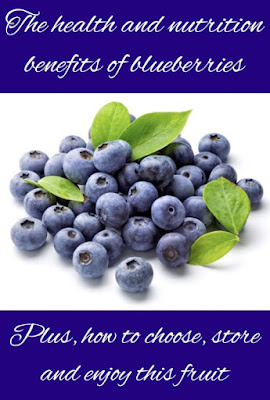The blueberries have been consumed since prehistoric times, which means they've been there for a long time. It is also said that the first Blueberry ever eaten was by our ancient ancestors around 3200 BC. And that's just the start of their story. Ever since then, the blueberry has been a symbol of health and wealth in many cultures. The Blueberry tree is an annual plant which is native to North America. The fruit is closely related to the cranberry, but it has its own special characteristics and flavor.
So, what makes blueberries so special and why are they such a powerful source of nutrition? In terms of blueberries nutrition, there are many things we can derive from eating this specific fruit. The main nutrients found in blueberries are anthocyanins, flavonoids, and other polyphenols. Let's take a closer look at each one of these factors.
Anthocyanins: The anthocyanins found in blueberries are commonly referred to as the "Pantoline" that give the fruit its name. These are actually very sweet, highly concentrated, and powerful antioxidants. They are found in very tiny quantities in other blueberries and fruits but are practically impossible to find in red grapes and black tea. This makes them extremely powerful food choices.
Flavonoids: Another valuable aspect of blueberries are the powerful flavonoids that provide many health benefits to those who consume them regularly. Flavonoids have been shown to lower bad cholesterol levels, lower blood pressure, and even prevent heart disease. All the benefits of an antioxidant sprinkled into blueberries makes them a no-brainer! These are also found in black and grape berries, although in much smaller amounts.
Polyphenols: These polyphenols are also commonly referred to as the purple berries. They are responsible for the color in the fruit, and are a huge contributor to their overall nutritional value. Eating several small blueberries a day is like having a continuous supply of medicine in your kitchen!
So, what does all of this have to do with eating blueberries? Well, eating blueberries or taking blueberry supplements can prevent many diseases and promote healthy living. For example, research has shown that blueberries can lower high blood pressure, stimulate the immune system, improve circulation, increase serotonin, and even prevent obesity. While this may seem like many nutrients in a single food, blueberries actually pack a lot. They are packed with antioxidants, which means they help fight off free radicals from damaging cell membranes. This is also partially responsible for why blueberries have so many health benefits.
As you can see, there are many reasons to add blueberries to your diet. They not only taste great but are also good for you. With so many health benefits, you owe it to yourself to give them a try sometime. You just may find that eating blueberries makes all the other junk food and super food foods you eat taste better.
If you aren't already consuming blueberries on a regular basis, you are missing out! It would be very hard to imagine a better snack food. And if you don't know what blueberries nutrition is all about, you really should find out now. You will never look at sugar and white flour in the same way again. Blueberries are the healthiest, sweet food you'll ever eat.
Did you know that eating blueberries will make your skin look better than it has in years? It's true. Blueberries can reduce fine lines and wrinkles, soothe acne, and nourish your skin so that it looks younger than it is. What more could you ask for in a fruit? The next time you want to get some blueberries into your diet, get them for breakfast, add them to a smoothie, and eat them on their own.
The best place to find more information about blueberries nutrition is on the Internet. There are hundreds of websites devoted to this topic. Even if you don't like reading through hundreds of pages of nutritional information, it's the closest thing there is to an all in one guidebook. There are tons of great recipes that use blueberries in them. Look for something you enjoy, such as blueberry pancakes, blueberry cookies, or blueberry yogurt.
